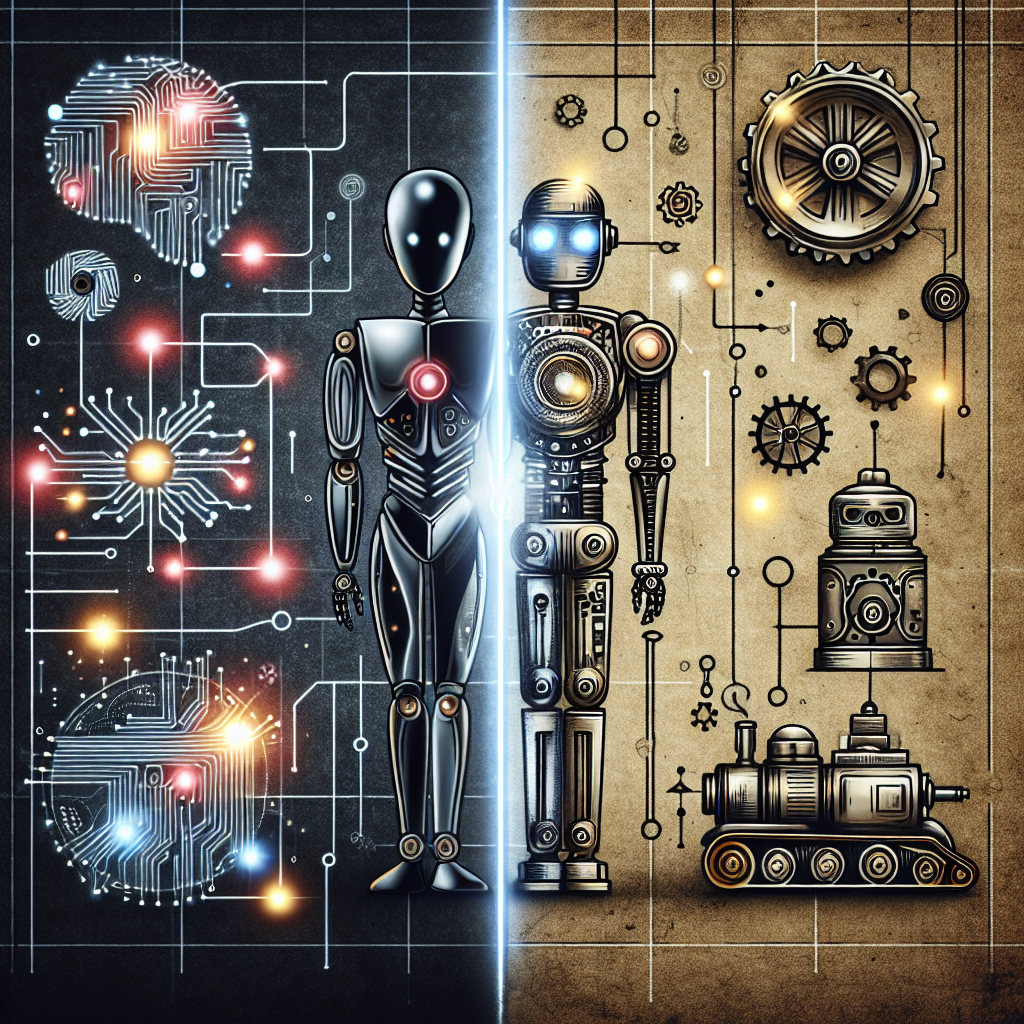In the ever-evolving landscape of technology, businesses rely heavily on automation and artificial intelligence (AI) to streamline their operations and enhance customer experiences. Two prominent players in this arena are AI agents and traditional bots. Understanding the distinctions between these two can empower entrepreneurs, marketers, and small business owners to make informed decisions that can lead to greater efficiency and effectiveness. In this article, we will delve into the critical differences between AI agents and traditional bots, exploring their functionalities, applications, advantages, and challenges.
Table of Contents
- Understanding Traditional Bots
- Exploring AI Agents
- Key Differences
- 3.1 Functionality
- 3.2 Learning Capabilities
- 3.3 Human Interaction
- 3.4 Use Cases
- Advantages of AI Agents
- Challenges Facing Both Technologies
- The Future of AI Agents and Bots
- Conclusion
Understanding Traditional Bots
Traditional bots, often referred to as chatbots, are pre-programmed software applications designed to perform specific tasks based on defined scripts. These scripts dictate the bot’s responses to user queries, allowing for rule-based automation. They are commonly used in customer service scenarios—answering frequently asked questions, processing transactions, and gathering user information.
Characteristics of Traditional Bots
- Scripted Responses: Traditional bots rely heavily on pre-defined questions and answers.
- Limited Understanding: They have a basic understanding of language and context, making them less effective with complex queries.
- Fixed Functionality: These bots can handle specific tasks but struggle to adapt outside their programmed capabilities.
For a deeper dive into how to enhance customer service using traditional bots, check out our article on Improving Customer Experience with Chatbots.
Exploring AI Agents
AI agents, on the other hand, are sophisticated systems designed to understand, learn, and adapt using machine learning algorithms. This allows them to handle complex tasks and provide personalized experiences based on user interactions.
Characteristics of AI Agents
- Intelligent Learning: They improve over time by analyzing data and adapting their responses.
- Contextual Understanding: AI agents can interpret context and sentiment, making interactions more human-like.
- Broader Functionality: Unlike traditional bots, AI agents can handle a variety of tasks across multiple domains.
For an example of AI applications in real-world scenarios, explore our article on Innovative Uses of AI in Business.
Key Differences
Understanding the differences between AI agents and traditional bots is essential for businesses considering which technology to implement. Below, we break down the key differences into several categories.
Functionality
Traditional bots operate under strict guidelines defined by their scripts. They can handle basic operations like answering FAQs or providing product information. Conversely, AI agents can perform a wider range of functions, from customer support to predictive analytics.
Learning Capabilities
While traditional bots are static, AI agents employ machine learning to adapt and improve. This means that the more they interact with users, the better they understand and serve their needs.
Human Interaction
AI agents facilitate a more engaging human-like interaction, largely due to their ability to interpret context and sentiment. This results in a more personalized experience for users, unlike traditional bots that can often come off as robotic and impersonal.
Use Cases
Traditional bots are often used for straightforward tasks, like booking tickets or providing weather updates. AI agents, however, can be leveraged for complex interactions, such as fraud detection in financial services or personalized marketing recommendations.
Advantages of AI Agents
The shift towards AI agents is driven by various advantages, including:
- Increased Efficiency: AI agents streamline processes by processing information quickly.
- Enhanced Customer Experience: Their ability to learn and adapt allows for a more personalized interaction.
- Data Analytics: AI agents can analyze user data to provide insights, helping businesses make informed decisions.
Challenges Facing Both Technologies
Despite their benefits, both traditional bots and AI agents face notable challenges:
- Implementation Costs: Both systems can require significant investment in development and maintenance.
- Data Privacy Concerns: Ensuring user privacy and adhering to regulations like GDPR is critical for both types of technologies.
- User Acceptance: Some users may still prefer human interaction over automated systems, particularly in sensitive situations.
The Future of AI Agents and Bots
The future of AI agents and traditional bots will likely see increased integration with other technologies, such as natural language processing (NLP) and data analytics tools. As businesses continue to embrace automation, understanding the nuances between the two will be vital for choosing the right solution for their needs.
Trends to Watch
- Greater Personalization: As AI technology evolves, expect even more tailored experiences for users.
- Integration with IoT: AI agents will likely become central to smart home devices, enhancing their functionality.
- Improved Security Measures: Ensuring data security will become a greater focus as AI technology continues to evolve.
Conclusion
In summary, while traditional bots serve a vital role in automating straightforward tasks, AI agents represent a leap toward more intelligent, adaptive systems capable of enhancing user interaction and providing deeper insights. Businesses looking to optimize their operations must carefully consider the distinct advantages and limitations of each option. By leveraging the right technology, entrepreneurs, marketers, and small business owners can drive efficiency, improve customer satisfaction, and stay competitive in an increasingly digital world.
For further insights and resources, explore more articles on our website, such as Leveraging Advanced Technology for Business Growth.
By understanding these differences and the applications of AI and traditional bots, businesses can make informed decisions that suit their specific needs and drive future success.
